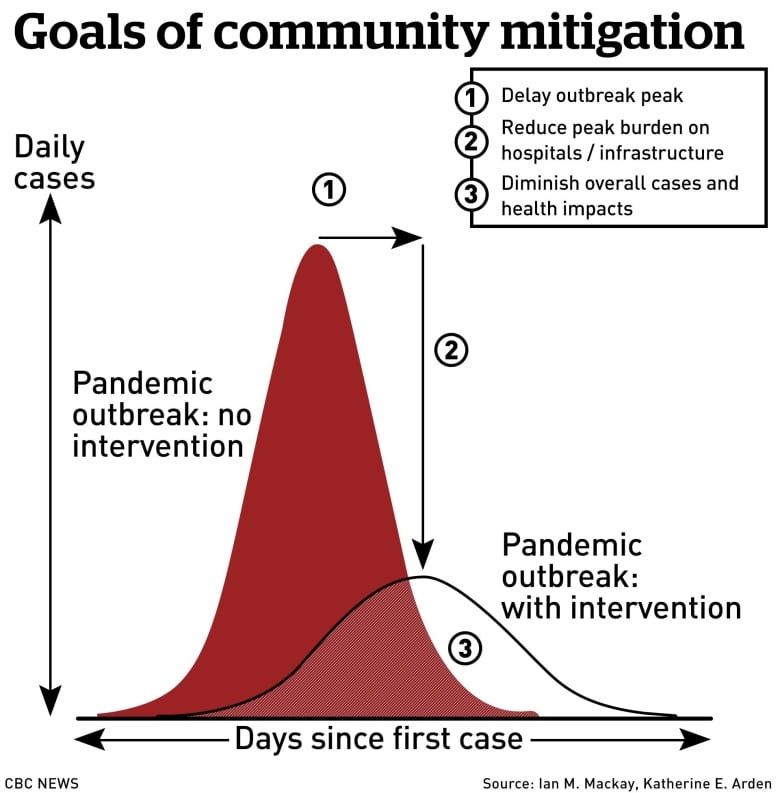Coronavirus News
Coronavirus ‘They have changed the course of this outbreak:’ Revelations from handling of coronavirus in China
New data from China’s COVID-19 epidemic reveals important clues about how the outbreak unfolded — and how it’s slowing sooner than expected. Canadian epidemiologist Bruce Aylward led the World Health Organization’s COVID-19 mission to China. (Denis Balibouse/Reuters)New data from China’s COVID-19 epidemic reveals important clues about how the outbreak unfolded — and how it’s slowing…

Coronavirus
New data from China’s COVID-19 epidemic reveals important clues about how the outbreak unfolded — and how it’s slowing sooner than expected.

New data from China’s COVID-19 epidemic reveals important clues about how the outbreak unfolded — and how it’s slowing sooner than expected.
Bruce Aylward, a Canadian doctor and epidemiologist, led the World Health Organization’s COVID-19 mission to China. This week, he showed reporters epidemic curves, or epicurves, of China’s COVID-19 outbreak to illustrate how transmission chains — people spreading the infection to others — were interrupted.
An epicurve is a graph that shows the frequency of new cases over time based on new infections per day. In many cases, an epicurve follows a bell curve, steadily rising to a peak and then declining as the outbreak burns out when the virus runs out of susceptible people to infect.
To epidemiologists — scientists who study diseases within populations of people — the shape of the curve reflects the source of the outbreak. The curve would vary based on whether there was a single common source like contaminated food (where there’s traditionally a sharp rise with a rapid decline that’s less abrupt than the rise) or multiple sources of infection like sick people out in the general public (with a slower, progressive rise in cases).
The data from China showed the rise was cut short.
“What you see is this is rising then it abruptly gets blunted,” Aylward said. That’s a picture that suggests some kind of measures were taken to mitigate the outbreak, which the team estimated peaked in China between Jan. 23 and Feb. 2.

“It is the unanimous assessment of the team that they have changed the course of this outbreak. It was a rapidly escalating outbreak. It has plateaued and is coming downward sooner than expected,” said Aylward.
The report was released in English on Friday.
“When you look at the difference between what the curve may have been like and what it was actually like, that probably represents hundreds of thousands of Chinese people who have benefited from this tremendous effort.”
China’s unprecedented measures to stop the respiratory pathogen included old-fashioned public health tools that Aylward said were applied “with vigour”:
- Finding people who are infected and tracing their contacts, such as family members.
-
Practising social distancing — avoiding local public transportation and staying about two metres away from others who might be infected.
- Rapidly hospitalizing those who were seriously ill.
- Restricting movements through lockdowns of schools and businesses, suspending public transit and banning mass gatherings — measures that have also been described as Draconian.
“We are on the highest level of alert and highest level in terms of spread and of impact. But that is not in order to alarm or scare people,” said Dr. Mike Ryan, executive director of WHO’s emergencies program.
“People need to take a reality check now and really understand an all-of-government, an all-of-society approach is needed,” Ryan told reporters on Friday.

WHO officials said the single biggest lesson from their mission to China: speed is everything.
Maria Van Kerkove, WHO’s technical lead of the emergencies program, joined Aylward’s mission in China. She gave other examples where the containment approach has worked so far: Singapore, Vietnam and Nepal.
“These are all examples of where countries have been successful in containing this,” Van Kerkove said in a media briefing Friday. “But the point is that … the earlier we act and how robustly we act, especially in those initial cases, will determine if you’re dealing with a number of cases, one case or a small cluster, or you’re dealing with hundreds or thousands.”
In China, Aylward said, officials aren’t letting down their guard and continue to build hospitals and buy ventilators in case the virus surges again as lockdowns are eased.

Subscribe to the newsletter news
We hate SPAM and promise to keep your email address safe



















